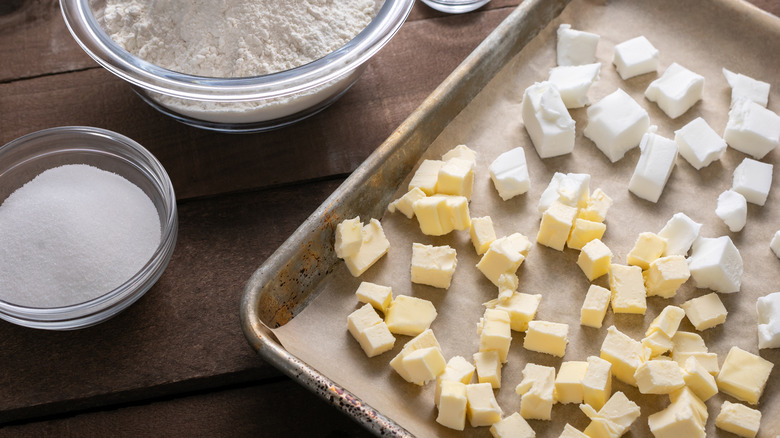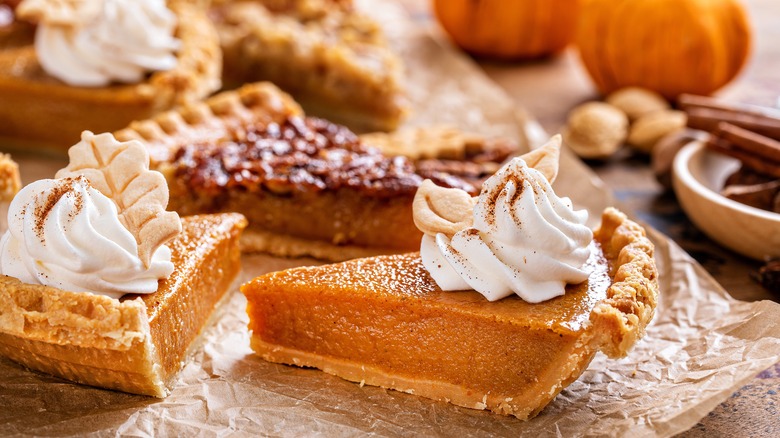Substituting Butter And Shortening Just Comes Down To Simple Math
Realizing you're out of butter is one of the worst feelings when you are in the middle of baking. Or, maybe you're following a vintage pie recipe that calls for shortening, and you're left scratching your head. Thankfully, when it comes to butter and shortening, a bit of simple math and some kitchen wisdom can save the day. But first, you need to understand the difference between butter and shortening before readily swapping them.
Butter is essentially fat and water along with some milk solids. Shortening, on the other hand, is pure fat, and this distinction plays a significant role in how each behaves in baking. Butter has a distinct, creamy flavor due to its milk solids while shortening is relatively neutral. Butter also melts at a lower temperature than shortening, which can affect the texture of baked goods.
Given that butter is not pure fat and shortening is, you'll need to adjust quantities if substituting one for the other. For example, use 20% less shortening. So if a recipe calls for 1 cup of butter, use 0.8 cups (or one cup minus three tablespoons) of shortening. Since shortening lacks water, you might also want to add 2 tablespoons of water to compensate. Butter needs to be increased by 25%. That means for every cup of shortening, you should use one and a quarter cups of butter.
Tips for when and why to substitute
Shortening leads to flakier pastries, while butter results in a richer flavor. If you're baking pies, particularly the crust, and you want that perfect flake, shortening is a winner. But if it is flavor you're after, particularly in cookies or cakes, butter reigns supreme. Cookies made with butter tend to spread more than those made with shortening due to butter's lower melting point. So if you want thicker cookies, shortening might be your best bet.
If you're baking for someone who's dairy-free or vegan, vegetable shortening can be a perfect substitute for butter. Shortening has a longer shelf life and doesn't need refrigeration, making it handy for recipes that require room-temperature fat. Butter, being a dairy product, has a shorter shelf life and can turn rancid if not stored correctly. Ultimately, it might be worth keeping shortening on hand in your pantry for backup and for vegan-friendly substitutions.
By being informed and strategic, you can effortlessly interchange these fats to achieve your desired flavor, texture, and appearance.

